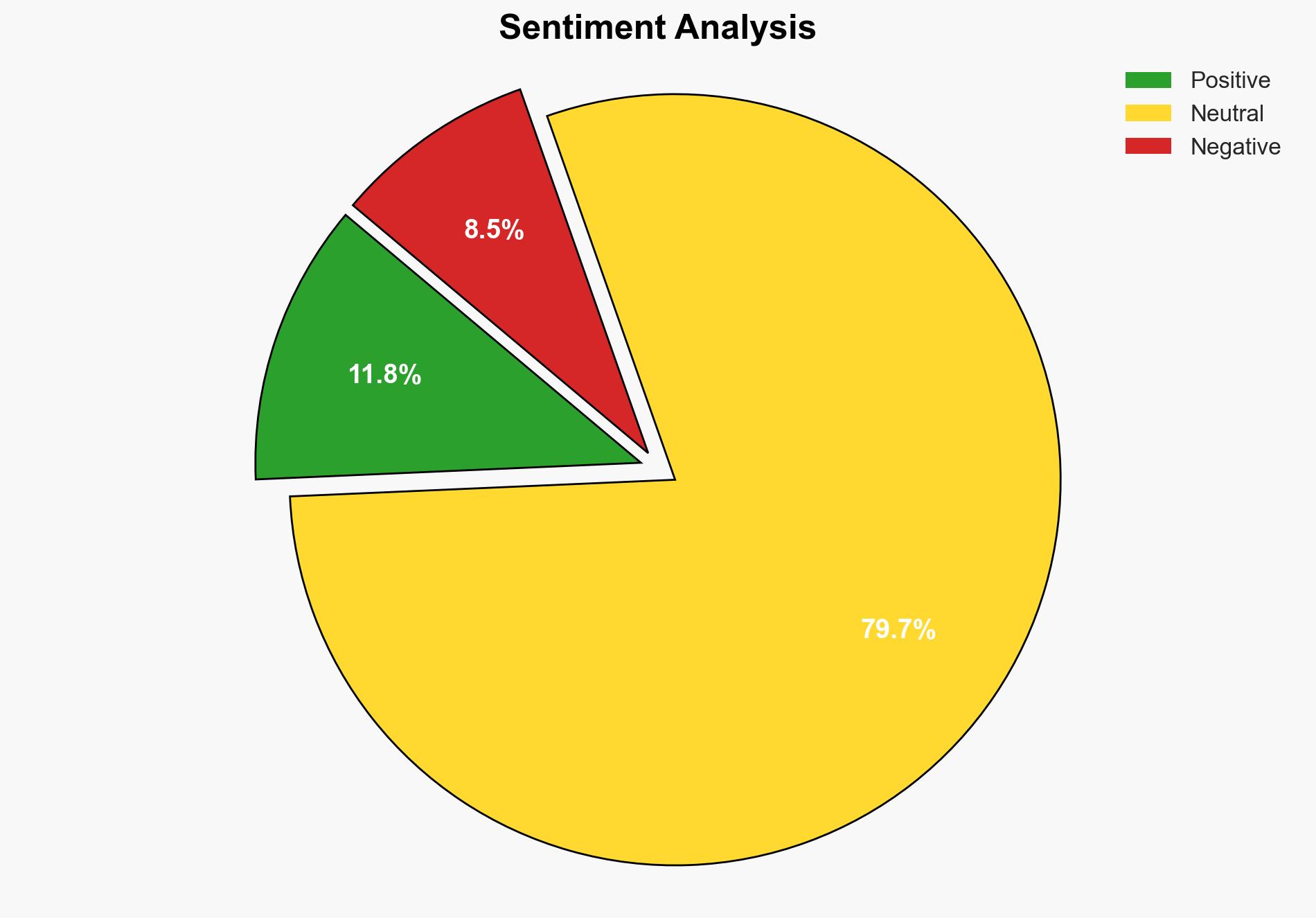A Tale of Two Phishing Sites Fri Mar 28th – Sans.edu
Published on: 2025-03-28
Intelligence Report: A Tale of Two Phishing Sites Fri Mar 28th – Sans.edu
1. BLUF (Bottom Line Up Front)
Recent analysis of phishing activities reveals the emergence of two distinct phishing sites employing novel techniques. These sites demonstrate advanced obfuscation methods and use compromised legitimate domains to execute credential-stealing operations. Immediate attention is required to mitigate potential widespread adoption by other threat actors. Strategic recommendations include enhancing monitoring of domain registrations and implementing advanced email filtering technologies.
2. Detailed Analysis
The following structured analytic techniques have been applied for this analysis:
General Analysis
The phishing sites under investigation utilize sophisticated malspam campaigns to lure victims. The first site employs a phishing kit that mimics legitimate web pages, while the second site uses a more straightforward approach with visible obfuscation techniques. Both sites have been linked to compromised domains, indicating a trend towards leveraging legitimate infrastructure for malicious purposes. The similarity in their operational tactics suggests possible collaboration or shared resources among threat actors.
3. Implications and Strategic Risks
The rise of these phishing sites poses significant risks to national security, particularly in the realm of cyber espionage and financial theft. The use of compromised domains can undermine trust in digital communications and e-commerce, potentially leading to economic disruptions. The evolving nature of these threats necessitates continuous adaptation of cybersecurity measures to protect sensitive information and infrastructure.
4. Recommendations and Outlook
Recommendations:
- Enhance domain monitoring and verification processes to detect and mitigate compromised sites promptly.
- Implement advanced email filtering and authentication protocols to reduce the success rate of malspam campaigns.
- Encourage cross-sector collaboration to share threat intelligence and develop unified response strategies.
Outlook:
In the best-case scenario, proactive measures and enhanced collaboration will reduce the effectiveness of these phishing campaigns, leading to a decline in similar attacks. In the worst-case scenario, failure to adapt to these evolving threats could result in increased financial losses and compromised national security. The most likely outcome involves a continued arms race between threat actors and cybersecurity professionals, necessitating ongoing vigilance and innovation.
5. Key Individuals and Entities
The report mentions Jan Kopriva and LinkedIn as significant entities involved in the analysis of these phishing activities. Their insights contribute to understanding the broader implications and potential countermeasures against such threats.





